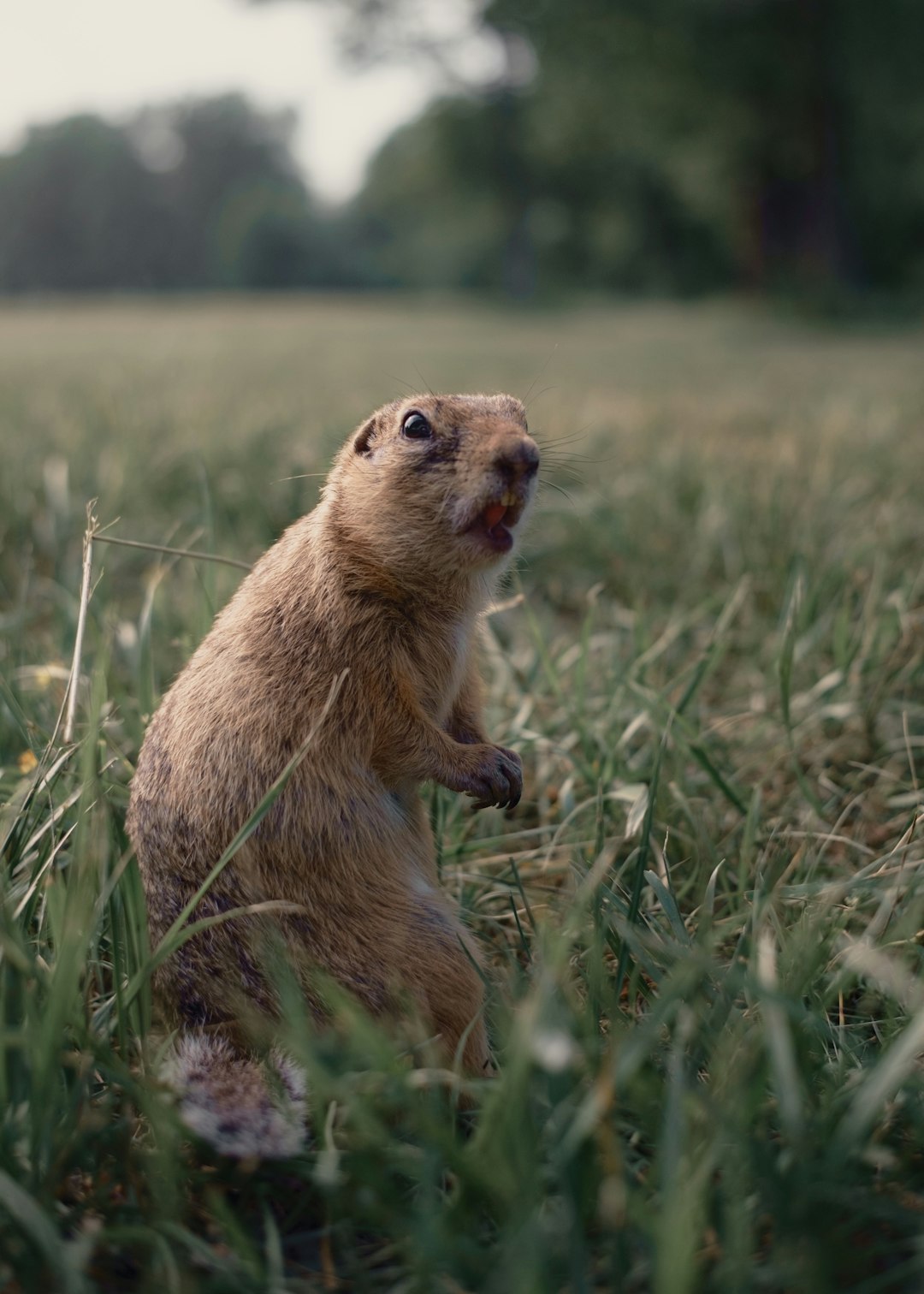Ground Squirrel vs. Tree Squirrel
What's the Difference?
Ground squirrels and tree squirrels are both members of the squirrel family, but they have some key differences in their behavior and habitat. Ground squirrels, as their name suggests, primarily live on the ground and create burrows for shelter. They are known for their digging abilities and often forage for food on the ground. Tree squirrels, on the other hand, are more arboreal and spend the majority of their time in trees. They are agile climbers and use their long tails for balance while navigating branches. Both types of squirrels are known for their quick movements and bushy tails, but their preferred habitats and behaviors set them apart.
Comparison

| Attribute | Ground Squirrel | Tree Squirrel |
|---|---|---|
| Species | Various species in the genus Spermophilus | Various species in the family Sciuridae |
| Habitat | Live in burrows underground | Live in trees or nests |
| Size | Generally smaller in size | Generally larger in size |
| Behavior | More likely to be ground-dwelling | More likely to be arboreal |
| Diet | Primarily herbivorous | Varied diet including nuts, seeds, and insects |

Further Detail
Physical Appearance
Ground squirrels and tree squirrels are both members of the Sciuridae family, but they have distinct physical differences. Ground squirrels are typically smaller in size compared to tree squirrels. They have shorter tails and are built closer to the ground, which allows them to move quickly in their underground burrows. Tree squirrels, on the other hand, are larger and have longer, bushier tails that help them balance while navigating tree branches.
Habitat
As their names suggest, ground squirrels primarily live on the ground, digging burrows for shelter and protection. They are commonly found in open grasslands, meadows, and deserts. Tree squirrels, on the other hand, are arboreal creatures that spend most of their time in trees. They build nests, called dreys, in the branches of trees where they rest and raise their young. Tree squirrels are often seen in forests, parks, and urban areas with plenty of trees.
Behavior
Ground squirrels are known for their social behavior, often living in colonies with complex social structures. They communicate with each other through various vocalizations and body language. Tree squirrels, on the other hand, are more solitary creatures, only coming together during the mating season. They are known for their agility and acrobatic skills, effortlessly leaping from tree to tree.
Diet
Both ground squirrels and tree squirrels are omnivores, meaning they eat a variety of foods. Ground squirrels primarily feed on seeds, nuts, fruits, and insects. They are known to store food in their burrows to sustain them through the winter months. Tree squirrels also eat nuts and seeds but are more likely to consume fungi, bird eggs, and even small birds. They have been observed raiding bird feeders for a quick meal.
Reproduction
Ground squirrels and tree squirrels have similar reproductive patterns, with females giving birth to litters of young. Ground squirrels typically have larger litters, with up to 10 offspring, while tree squirrels usually have smaller litters of 2-4 young. Both species care for their young, nursing them and teaching them essential survival skills. Mating season for ground squirrels usually occurs in the spring, while tree squirrels mate in late winter or early spring.
Adaptations
Ground squirrels have evolved several adaptations to survive in their underground habitats. They have strong claws for digging burrows and escaping predators quickly. Their fur coloration helps them blend in with their surroundings, providing camouflage from predators. Tree squirrels, on the other hand, have adaptations for life in the trees. Their sharp claws and agile bodies allow them to navigate tree branches with ease. They also have excellent vision and a keen sense of smell to detect predators and locate food.
Predators
Both ground squirrels and tree squirrels face threats from predators in their respective habitats. Ground squirrels are preyed upon by snakes, birds of prey, and mammals like foxes and coyotes. They rely on their burrows for protection and use alarm calls to warn others of approaching danger. Tree squirrels are vulnerable to predators like hawks, owls, and domestic cats. They use their agility and speed to escape danger by leaping from tree to tree.
Conclusion
In conclusion, ground squirrels and tree squirrels may belong to the same family, but they have distinct differences in their physical appearance, habitat, behavior, diet, reproduction, adaptations, and predators. Ground squirrels are smaller, live on the ground, and are social animals, while tree squirrels are larger, arboreal creatures that are more solitary. Both species have unique adaptations that help them survive in their respective environments and face threats from predators. Understanding these differences can help us appreciate the diversity of the squirrel family and the incredible adaptations that allow them to thrive in various ecosystems.
Comparisons may contain inaccurate information about people, places, or facts. Please report any issues.